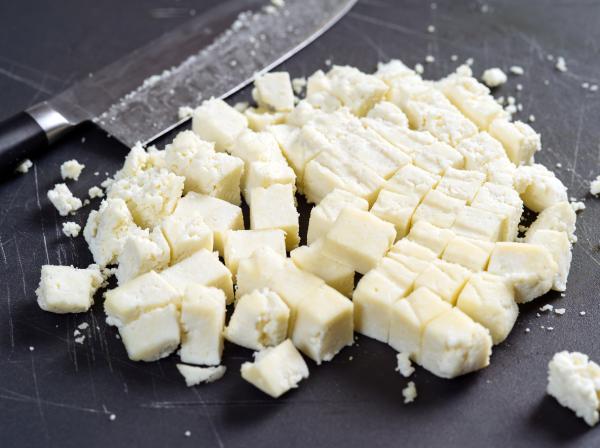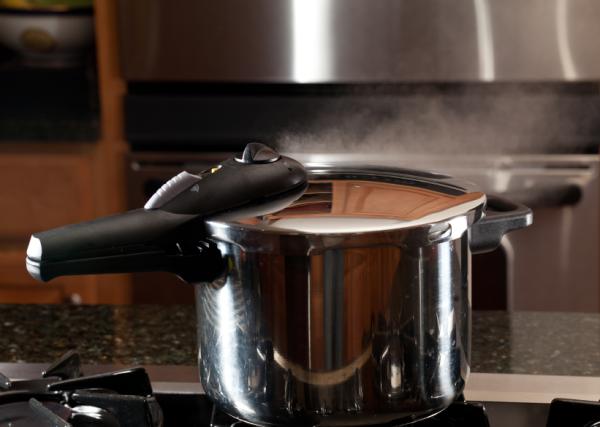How to Make Paneer Soft after Refrigerated?


Paneer, a fresh cheese with a mild and milky flavor, is a cornerstone of Indian cuisine. However, like most dairy products, paneer is perishable and requires proper storage to maintain its freshness and quality. Refrigeration is the primary method for preserving paneer, effectively slowing down bacterial growth that can lead to spoilage. However, while refrigeration is crucial for preserving paneer, it also presents a challenge in terms of texture. The cold, dry environment of the refrigerator can draw out moisture from the cheese, causing it to harden and become rubbery.
In the following article from oneHOWTO, we will discuss three common methods to soften refrigerated paneer and provide conservation tips to ensure it maintains its specific texture.
Let it soften naturally
In order to achieve the ideal texture for your recipe, it's best to plan ahead and allow the paneer to soften naturally.
Simply take it out of the refrigerator at least 2 hours before cooking. This allows the paneer to gradually reach room temperature, resulting in a softer texture that absorbs flavors better and cooks evenly.
Immerse it in warm water
In some cases, especially during colder weather, paneer may not fully soften after reaching room temperature. If this is the case, you can try immersing it in warm water to speed up the process. Simply follow these steps:
- Gently warm a pot of water on the stovetop or use the microwave. Aim for a comfortable warm temperature, not boiling.
- Cut the paneer into cubes of similar size. This increases the surface area and promotes faster softening.
- Fully immerse the paneer cubes in the warm water, ensuring all pieces are covered.
- Soak the paneer for 3-5 minutes, checking its texture periodically. It is crucial to remove the paneer promptly once softened. Exceeding 5 minutes can result in overly soft and potentially crumbly paneer, making it difficult to use in recipes.
This method allows for controlled softening, ensuring the paneer reaches the desired texture without overdoing it. However, keep in mind that the ideal texture depends on the specific recipe. For dishes requiring firmer paneer cubes, aim for less softening time.
Steam it
Steaming the paneer is not only quick but, unlike soaking, steaming helps preserve the paneer's shape, making it ideal for dishes requiring cubed or crumbled paneer. To do it, simply:
- Fill a pot or kettle with water and bring it to a boil.
- Turn off the heat. Place a strainer over the pot, ensuring the strainer doesn't touch the water.
- Evenly spread the paneer cubes on the strainer.
- Cover the strainer with a lid to create a steam chamber.
- Steam the paneer for 10 minutes. Check the texture periodically. You want it softened, but not mushy.
Once the paneer reaches the desired softness, remove it from the heat and use it in your recipe.
Softening paneer is a great first step, but what about maintaining that perfect texture while cooking? Our article on how to keep paneer soft while cooking explains how to achieve a restaurant-quality paneer in every dish.

Prevent paneer from drying out
Now that you've learned how to soften paneer after refrigerating it, it's important to understand how to preserve its freshness to prevent it from drying out. Proper storage is crucial for maintaining the soft and fresh texture of paneer. Here are some tips on what to avoid and how to keep your paneer in optimal condition:
Avoid leaving paneer uncovered in the refrigerator, as it can be exposed to dry, cold air that may cause it to lose moisture and become hard and rubbery. Instead, store paneer in an airtight container.
For longer storage periods (more than a few days), consider storing paneer submerged in fresh water and remember to change the water every other day. This practice helps preserve freshness and prevents spoilage effectively.
Finally, to maintain that delightful texture in your final dish, here's a crucial tip: don't add paneer to your curry at the very beginning. Prolonged cooking can toughen paneer, making it rubbery and unpleasant. By adding it later in the cooking process, you ensure it retains its soft, melt-in-your-mouth texture. Our article on when to add paneer to curry reveals more about how to achieve that perfectly cooked paneer that absorbs all the delicious flavors without getting tough.
Add paneer in the end

If you want to read similar articles to How to Make Paneer Soft after Refrigerated?, we recommend you visit our Food & drink category.







